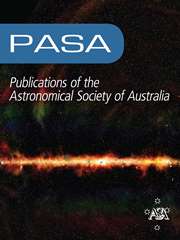Article contents
Orbital period variation analysis of the HS 0705+6700 post-common envelope binary
Published online by Cambridge University Press: 03 June 2024
Abstract
To detect additional bodies in binary systems, we performed a potent approach of orbital period variation analysis. In this work, we present 90 new mid-eclipse times of a short-period eclipsing binary system. Observations were made using two telescopes from 2014 to 2024, extending the time span of the  $O-C$ diagram to 24 yr. The data obtained in the last seven years indicate significant deviations in the
$O-C$ diagram to 24 yr. The data obtained in the last seven years indicate significant deviations in the  $O-C$ diagram from the models obtained in previous studies. We investigated whether this variation could be explained by mechanisms such as the LTT effect or Applegate. To investigate the cyclic behaviour observed in the system with the light travel time effect, we modelled the updated
$O-C$ diagram from the models obtained in previous studies. We investigated whether this variation could be explained by mechanisms such as the LTT effect or Applegate. To investigate the cyclic behaviour observed in the system with the light travel time effect, we modelled the updated  $O-C$ diagram using different models including linear/quadratic terms and additional bodies. The updated
$O-C$ diagram using different models including linear/quadratic terms and additional bodies. The updated  $O-C$ diagram is statistically consistent with the most plausible solutions of models that include multiple brown dwarfs close to each other. However, it has been found that the orbit of the system is unstable on short time scales. Using three different theoretical definitions, we have found that the Applegate mechanism cannot explain the variation in the orbital period except for the model containing the fifth body. Therefore, due to the complex nature of the system, further mid-eclipse time is required before any conclusions can be drawn about the existence of additional bodies.
$O-C$ diagram is statistically consistent with the most plausible solutions of models that include multiple brown dwarfs close to each other. However, it has been found that the orbit of the system is unstable on short time scales. Using three different theoretical definitions, we have found that the Applegate mechanism cannot explain the variation in the orbital period except for the model containing the fifth body. Therefore, due to the complex nature of the system, further mid-eclipse time is required before any conclusions can be drawn about the existence of additional bodies.
Keywords
Information
- Type
- Research Article
- Information
- Copyright
- © The Author(s), 2024. Published by Cambridge University Press on behalf of Astronomical Society of Australia
References
- 5
- Cited by


